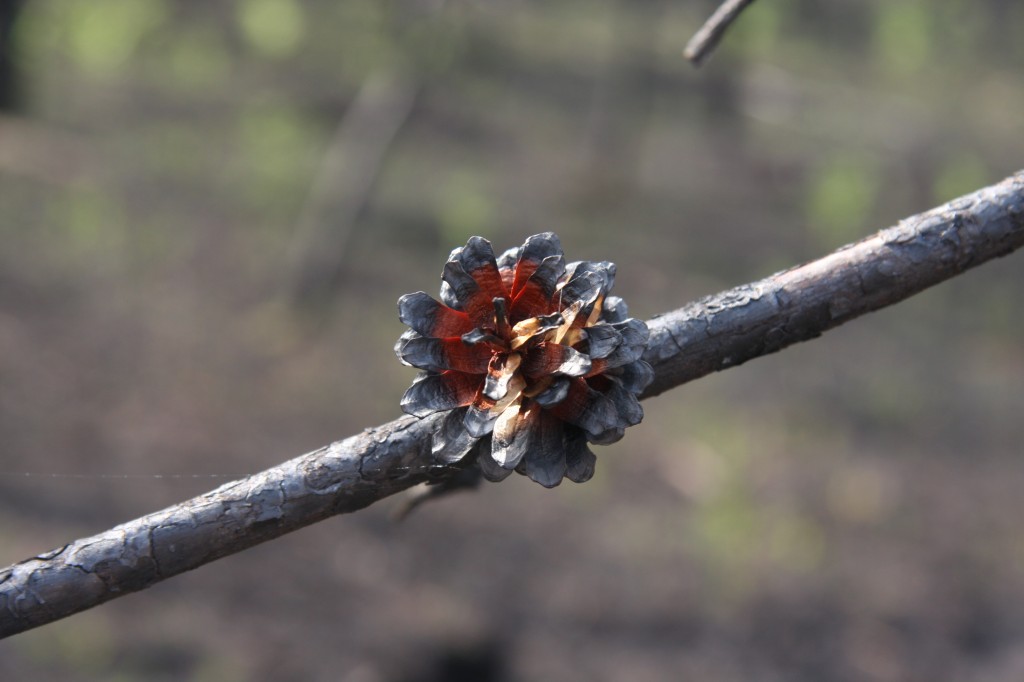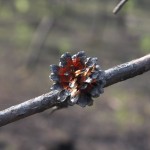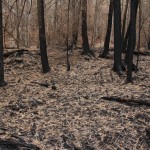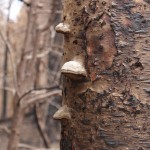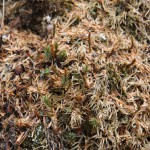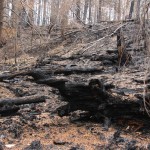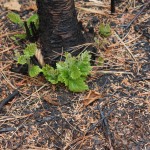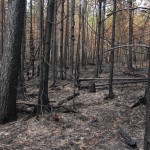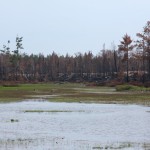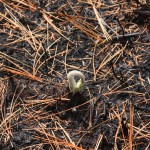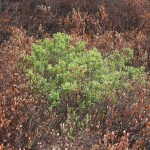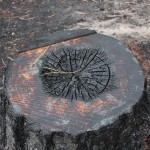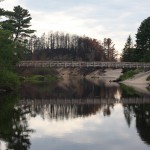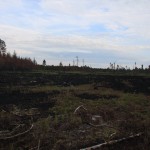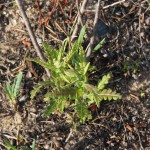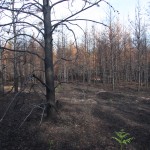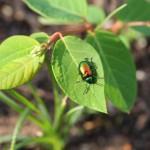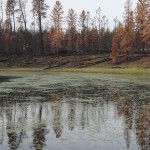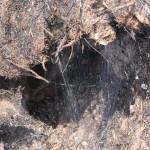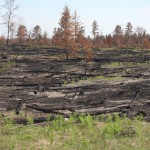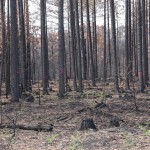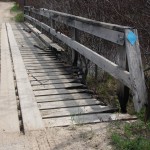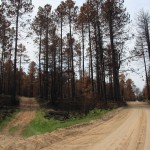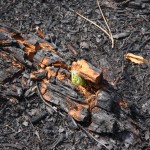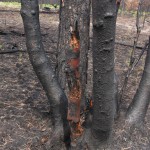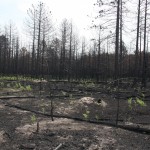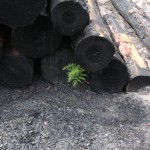The area of the Duck Lake Fire between Newberry and Paradise and from near Highway 123 north to the shores of Lake Superior left behind some estimated 21,069 Acers of charred forest. The area opened to the general public on June 11 and my son and I visited on June 15 & 16, only about 3 weeks after the fire first broke out from a lightning strike near Pike Lake on May 24, 2012.
As we turned off County Road 500 and down the trail of DP5 it didn’t take too long to see the southern edges of the fire less than 2 miles in off the main road. Although this was not the hottest area of burn, it was non-the-less impressive as to how so much could be burnt black. Almost immediately it was impressed upon me as to the durability of our native flora. Bracken Ferns, Birches, Maples and others were already regenerating growth from underground roots or at the bases of burned trees. As we moved deeper into the fire zone the devastation only intensified as we continued to realize this was a very intense and hot fire. Again as we moved north to DP4 and on to the mouth of the Two Hearted River and then west the vast blackness and devastation to forest and personal property was unfathomable. Red and Jack Pines in some areas were burned all the way to the tops and left looking like charcoal trees. In some areas the fire jumped County Road 500 and near the mouth of the Two Hearted River it had jumped the river and burnt both sides. While on the beach there, all you could see to the west and inland from Lake Superior was burn right out to the forest edge along the beach.
It is interesting to see areas or parts of plants still green and seemingly untouched, while those all around or even part of the same plant are burnt. Trailing Arbutus in particular seemed somehow not be completely burned off in most areas. In bogs and along lake shores the Laurels and other woody shrubs are now just charcoal sticks all pointing one direction. Pitcher Plants are brown with burnt edges but the smaller lower leaves somehow hid and escaped the effects of the fire and are still green.
The landscape in places of complete burn off were now black, brushed with bright green as if the master artist was beginning to paint a new landscape on this black canvas. In many areas the light green of ferns starkly contrasts the blackened landscape. Jack Pine cones need the heat from the fire to open and release there seed, as this happens and seedlings appear they will add color to the landscape as well.
Life is moving back in or reemerging from the safety of ground nests. Ant hills are visible as the light sand piles significantly stand out against the blacked ground. Spiders, butterflies near the edges and other insects are carrying on as usual. Birds are returning and deer are moving through the desolate landscape. Some areas will not regenerate as quickly as the fire was so hot and intense in places it is thought that the soil is sterilized. In some areas the heat was so great that Birch trees are black and blistered, almost unidentifiable until one sees the new leaves sprouting from the base.
Check back from time to time as I hope to revisit some of these sites and report yet this year and then at least yearly. Follow the rebirth of the forest with me.
 Click on the title of a post to view a full gallery of images.
Click on the title of a post to view a full gallery of images.
